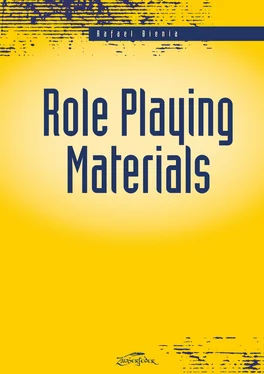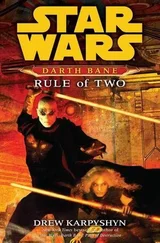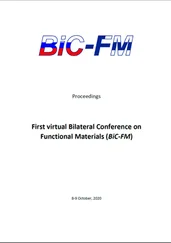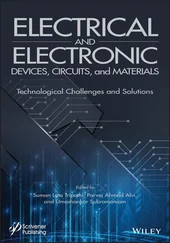By studying materials when and where role playing happens, this dissertation aims to solve the ontological and epistemological levels of the problem. The guiding question of this study is, how do materials make role playing work in role-playing games? I speak of guiding question, because “guidance” is in line with the methodological premise of actor-network theory, “follow the actors” (Latour, 1987). As the theoretical and methodological toolset, it helped me to solve the twofold problem and answer the questions: How do materials collaborate with narrative and ludic actors in role-playing games? What changes do materials demand for their collaboration from narrative and ludic actors? How do these inter-relational processes change role-playing game networks? The results of my actor-network studies of materials in role-playing games provide the content for the next chapters.
Structure of this book . Chapter 2explains actor-network theory in more detail. When I follow materials in different role-playing game forms, I follow one of many elements that make role playing work. I decided to follow materials, because there is a lack of understanding on how materials work in role playing in the field of game studies in general and role-playing game studies in particular. The inclusion of narrative and ludic elements aims to expand the knowledge about role playing and bridge this dissertation with previous studies. The disadvantage of this approach is that I thereby limit one of the strengths of actor-network theory, that of entering the field with a small number of concepts. The advantage is that by using these concepts in my field work, I can bridge actor-network theory and previous studies of role-playing games. More important, the study becomes feasible in the given time frame of my dissertation project.
For the next empirical chapters, I selected three forms of role-playing games where different constellations of elements constitute role playing. These three forms are live action role play or larp ( Chapter 3), mixed reality role-playing games ( Chapter 4), and tabletop role-playing games ( Chapter 5). The results draw on empirical data collected during field work conducted primarily in Germany from 2010 to 2015.
Chapter 3follows the costume in German larp. I participated in larps that involved hundreds of players dressing up as characters in a fantasy world. We role-played for four days at a former military camp that was rented for this event. The wizard example above was taken from one of these larps. In this chapter, I show how the costume takes part in role playing during a larp. By following the costume, I learned that it consists of a changing group of material elements. These changing materials have co-created German larp throughout the past 25 years and are responsible for its current shape.
Chapter 4moves to the emerging form of mixed reality role-playing games. These games use mobile computing devices and headsets which construct augmented and virtual reality systems. For role playing with augmented reality systems, I followed the smartphone as a mobile computing device. It brought me to a larp about criminals in a darker version of the contemporary world. The players used their smartphones to access digital information in the larp world, but several things went wrong. I discuss the tensions to examine the social relations between the heterogeneous elements involved. For role playing with virtual reality systems, I followed the Oculus Rift Development Kit 2 , the prototype of a virtual reality headset. Playing a computer role-playing game with this headset, I realized that role playing reveals relations that are necessary to make the headset work in a game. Tracing these relations not only showed how they intertwine machine, player, and role-playing game, but revealed opportunities for further relations that require work with the current prototype of the virtual reality system. On the basis of these two examples, I argue that the requirements for role playing show how augmented and virtual reality systems might merge in future technological developments.
Chapter 5is about tabletop role-playing games where people sit around a table. The core activity for players is telling each other what the character does in the shared world. Thus, the group experiences vicariously their characters’ adventures. However, tabletop role-playing games involve not only people, but also the table, sheets of paper, and more material elements. To examine how these materials participate, I take a more radical step in this chapter with a methodological experiment. I explore the actions of materials in tabletop role-playing games by letting materials speak. One result is that I am able to describe what happens between materials that seem neutral during role playing. The experiment shows how future researchers can use role playing of materials as an ethnographic method. There have been forerunners in actor-network theory, but no study of role-playing games to date has investigated materials in this way.
In the concluding chapter ( Chapter 6), I present an alternative understanding of how materials make role playing work not on the basis of one element, physical or material, mental or creative, but how heterogeneous elements collaborate at specific sites of role playing.
Chapter 2
METHODOLOGY & THEORY
2.1 Introduction, or Following Materials to Multiple Role-Playing Game Sites
This book is about role-playing games, a genre of games played and enjoyed in various forms around the globe. Games are the central unit of analysis of game studies, a field which emerged at the turn of this millennium (Aarseth, 2001). Although the field focuses mainly on digital games, more and more researchers have been asking for the inclusion of analog games in recent years. These discussions take place among members of the Digital Game Research Association (DiGRA), the largest international academic association on games. As a pun, discussions about analog games bear the tag “GRA,” omitting the “Di” for Digital in the association name DiGRA. Additionally, journals have emerged that focus on non-digital games, such as Analog Game Studies (since 2014). When this study includes role-playing games with digital technology ( Chapter 4) as well as those without the necessary use of computers ( Chapters 3and 5), it avoids the digital/analog dichotomy with an alternative theoretical and methodological toolset: actor-network theory. As an inter-disciplinary field, game studies draws theories and methodologies mainly from the humanities and social sciences, but few studies to date have worked with actor-network theory. In Chapter 4of this dissertation, I discuss the dichotomy between digital and non-digital games, and explain my approach that includes digital and analog role-playing games. I return to game studies later in this chapter, but I need first to explicate how this study is situated in actor-work theory, and then introduce the relevant methodological principles in more detail.
The main methodological principle of actor-network theory is to “follow the actors,” so I had to go where “the structural effects actually [are] being produced” (Latour, 2005, p. 175). Since I was interested in those structural effects that produce role playing or make it work, I followed material actors to sites where they took part in three forms of role-playing games: larp, mixed reality role-playing games, and tabletop role-playing games.
I have been familiar with role-playing games as a player since the early 1990s. The first games that I played were on an Atari computer, such as Ultima Underworld: Stygian Abyss (Looking Glass Studios and Origin Systems, 1992) and Ambermoon (Thalion Software, 1993). In January 1995, I bought my first tabletop role-playing game Das Schwarze Auge (Schmidt Spiele / FanPro, 1992). Around this time, I read about larps that took place in the Czech Republic and were advertised in computer game magazines ( PowerPlay , 1995). It was eleven years, however, before I participated in my first larp ( Alcyon 10 , Fantasiewelten e.V., 2006). In the meantime, my perspective on these games changed when I began to modify and design my own games. I changed from being a role-player to a designer. The first design attempt was a tabletop role-playing game in 1998. I involved myself in creating a fictional world that drew upon the works of fantasy literature and 19 thcentury gothic novel. I then wrote several fantasy choose-your-own-path games for DOS with the Pascal programming language, and later I created mods for the computer role-playing game The Elder Scrolls IV: Oblivion (Bethesda Softworks, 2006). Mods are software units that add content which “modifies” the core game. Moving on to designing larps, I co-organized Schwarzbernstein 1 (Utopion, Schwarzbernstein Orga, 2010) and wrote the mini larp Death Buddies about dying in contemporary Western society (2012). 1Compared to my background as a player, my activities as a designer have been limited, but they do provide me with a second perspective on the games that I studied for this book.
Читать дальше












